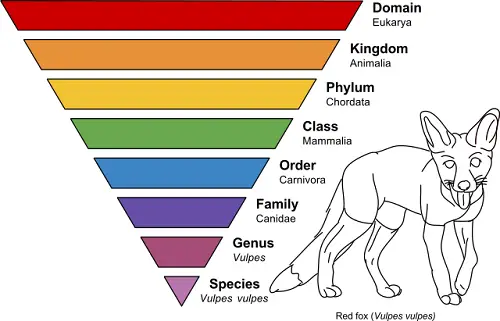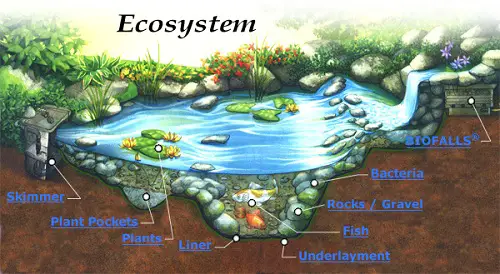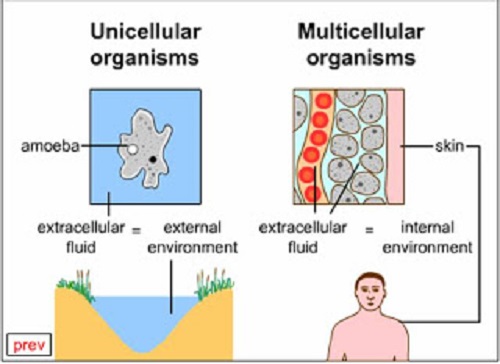Taxonomy and systematics are two closely related fields within biology that involve the classification and organization of living organisms. Here are some similarities between taxonomy and systematics:
- Study of Biological Diversity:
- Both taxonomy and systematics are concerned with the study of biological diversity. They aim to categorize, describe, and organize the vast array of living organisms on Earth.
- Classification of Organisms:
- Both disciplines involve the classification of organisms into hierarchical categories based on their evolutionary relationships and shared characteristics. This hierarchical system typically includes domains, kingdoms, phyla, classes, orders, families, genera, and species.
- Use of Nomenclature:
- Both taxonomy and systematics use a standardized system of nomenclature to assign names to organisms. The binomial nomenclature, developed by Carl Linnaeus, is widely used to give each species a unique two-part scientific name.
- Focus on Evolutionary Relationships:
- Both fields are concerned with understanding the evolutionary relationships between different groups of organisms. They use morphological, molecular, and genetic data to infer these relationships and construct phylogenetic trees.
- Utilization of Descriptive Methods:
- Both taxonomy and systematics employ descriptive methods to characterize and document the features of organisms. This includes morphological, anatomical, and molecular characteristics.
- Importance in Biological Research:
- Both taxonomy and systematics play crucial roles in biological research. They provide a framework for organizing information about biodiversity, enabling scientists to make predictions, conduct comparative studies, and understand the evolutionary history of organisms.
- Dynamic and Evolving Fields:
- Both fields are dynamic and continually evolving as new information becomes available. Advances in molecular biology and genetics, in particular, have significantly impacted the understanding of evolutionary relationships and taxonomy.
- Collaboration with Other Disciplines:
- Both taxonomy and systematics collaborate with other biological disciplines, such as ecology, genetics, and paleontology, to gain a comprehensive understanding of the relationships and characteristics of living organisms.
- Global Standards:
- Both fields adhere to global standards and guidelines established by organizations such as the International Code of Zoological Nomenclature (ICZN) and the International Code of Nomenclature for Algae, Fungi, and Plants (ICN).
While taxonomy is often considered a sub-discipline of systematics, with taxonomy focusing more on the identification and classification of organisms, and systematics encompassing a broader study of evolutionary relationships, the terms are sometimes used interchangeably, and the distinctions between them can vary.

What is Taxonomy?
Taxonomy is the science of naming, defining, and classifying living organisms based on shared characteristics and evolutionary relationships. The goal of taxonomy is to organize the vast diversity of life on Earth into a logical and systematic framework. The term “taxonomy” comes from the Greek words “taxis,” meaning arrangement or order, and “nomos,” meaning law or science.
Key aspects of taxonomy include:
- Classification: Taxonomists classify organisms into hierarchical categories based on their similarities and differences. The standard hierarchy includes domains, kingdoms, phyla, classes, orders, families, genera, and species.
- Nomenclature: Taxonomists use a standardized system of nomenclature to give each species a unique two-part scientific name, often referred to as the binomial nomenclature. This system was developed by Carl Linnaeus and typically includes the genus name (capitalized) followed by the species name (lowercase), both in Latin or Greek.
- Identification: Taxonomy involves the identification and description of organisms based on their morphological, anatomical, and, more recently, molecular characteristics. This helps in distinguishing one species from another.
- Evolutionary Relationships: Taxonomy is increasingly incorporating molecular biology and genetics to understand the evolutionary relationships between different groups of organisms. Phylogenetic trees, which represent the evolutionary history of species, are used to depict these relationships.
- Dynamic Nature: Taxonomy is dynamic and continuously evolving. Advances in technology and scientific understanding lead to revisions and updates in classification systems as new data become available.
- Collaboration with Other Disciplines: Taxonomy often collaborates with other biological disciplines, including ecology, paleontology, and systematics. This interdisciplinary approach enhances the understanding of the relationships and characteristics of living organisms.
Overall, taxonomy provides a systematic and organized approach to cataloging the incredible diversity of life on Earth. It serves as the foundation for various biological studies, conservation efforts, and our understanding of the evolutionary history of different species.
What is Systematics?
Systematics is a branch of biology that deals with the study of the diversity of life, the relationships between different organisms, and the evolutionary history of species. The primary goal of systematics is to understand the evolutionary relationships and patterns of descent among organisms, leading to the development of a natural and logical classification system.
Key aspects of systematics include:
- Phylogenetics: Systematics utilizes phylogenetics, which is the study of evolutionary relationships among groups of organisms. Phylogenetic analyses involve the construction of phylogenetic trees or cladograms to represent the evolutionary history and common ancestry of species.
- Taxonomy Integration: Systematics often incorporates taxonomy, which is the science of naming, defining, and classifying organisms. Taxonomy is considered a subset of systematics, focusing on the identification and classification of organisms.
- Molecular Biology and Genetics: Advances in molecular biology and genetics have significantly influenced systematics. DNA sequencing and molecular techniques are used to analyze genetic similarities and differences among organisms, providing insights into their evolutionary relationships.
- Classification Systems: Systematists develop classification systems that reflect the evolutionary relationships among organisms. These systems are hierarchical, with categories ranging from broader groups (domains, kingdoms) to more specific groups (phyla, classes, orders, families, genera, and species).
- Biogeography: Systematics often considers the geographic distribution of organisms to understand how species have evolved and dispersed over time. Biogeographic patterns help in reconstructing historical events that shaped the current distribution of life forms.
- Character Evolution: Systematics examines the evolution of characters or traits within different lineages. This includes morphological, anatomical, behavioral, and molecular characters that are inherited and modified over generations.
- Comparative Anatomy: The study of comparative anatomy, which involves comparing the anatomical structures of different organisms, is an essential component of systematics. Shared and derived characteristics are analyzed to determine evolutionary relationships.
- Interdisciplinary Nature: Systematics is an interdisciplinary field that integrates data and methodologies from various biological disciplines, including paleontology, ecology, and taxonomy, to provide a comprehensive understanding of the evolutionary history of life.
- Dynamic Nature: Similar to taxonomy, systematics is dynamic and subject to revisions based on new discoveries and advancements in scientific knowledge. The field evolves as researchers gain a deeper understanding of genetic relationships and refine classification systems.
In summary, systematics plays a crucial role in organizing the vast diversity of life on Earth by elucidating the evolutionary relationships among different species. It provides a framework for understanding the unity and diversity of life and contributes to our knowledge of the processes that have shaped the living world.
What are the differences between Taxonomy and Systematics?
Taxonomy and systematics are related fields within biology that involve the classification and organization of living organisms, but they have distinct focuses and goals. Here are the key differences between taxonomy and systematics:
- Scope and Focus:
- Taxonomy: Primarily concerned with the identification, naming, and classification of organisms based on their shared characteristics. Taxonomists aim to provide a systematic arrangement of species into hierarchical categories.
- Systematics: Encompasses a broader scope, including the study of evolutionary relationships among organisms. Systematics incorporates phylogenetics, which focuses on understanding the evolutionary history and patterns of descent among species.
- Hierarchy:
- Taxonomy: Primarily deals with the hierarchical classification of organisms, ranging from broader categories (domain, kingdom) to more specific ones (phylum, class, order, family, genus, species).
- Systematics: In addition to classification, systematics emphasizes the evolutionary relationships between different groups of organisms. It involves constructing phylogenetic trees or cladograms to represent the common ancestry and branching patterns of species.
- Goals:
- Taxonomy: Aims to provide an organized and standardized system for naming and categorizing living organisms. The emphasis is on creating a practical and accessible means of identification and communication.
- Systematics: Aims to understand the evolutionary history and diversification of life. Systematists seek to uncover the patterns of descent, the processes of evolution, and the relationships among organisms.
- Methods:
- Taxonomy: Primarily relies on morphological, anatomical, and ecological characteristics for the identification and classification of organisms. Molecular data may also be used, but the emphasis is on observable traits.
- Systematics: Integrates a variety of data, including molecular biology, genetics, morphology, and ecology. Molecular techniques, such as DNA sequencing, play a significant role in phylogenetic analyses and understanding evolutionary relationships.
- Interdisciplinary Nature:
- Taxonomy: While interdisciplinary to some extent, taxonomy is often more focused on descriptive and observational aspects, and it may collaborate with ecology and other fields for practical purposes.
- Systematics: Highly interdisciplinary, integrating data and methodologies from various biological disciplines, including molecular biology, genetics, paleontology, and ecology.
- Dynamic Nature:
- Taxonomy: Can be dynamic, with updates and revisions as new information becomes available, but the primary goal is often stability for practical purposes.
- Systematics: More explicitly embraces the dynamic nature of biological knowledge, with a constant reassessment and refinement of evolutionary relationships and classification systems as new data emerge.
In summary, while taxonomy is a component of systematics, taxonomy focuses more on the identification and classification of organisms, while systematics encompasses a broader study of evolutionary relationships and the patterns of descent among species.
Table summarizing the similarities and differences between Taxonomy and Systematics
Here’s a table summarizing the key similarities and differences between Taxonomy and Systematics:
| Characteristic | Taxonomy | Systematics |
|---|---|---|
| Scope and Focus | Primarily identification and classification. | Broader, includes understanding evolutionary relationships. |
| Hierarchy | Deals with hierarchical classification. | Involves classification and phylogenetic relationships. |
| Goals | Organized naming and categorization of organisms. | Understanding evolutionary history and diversification. |
| Methods | Relies on morphological and ecological traits. | Integrates molecular biology, genetics, and ecology. |
| Interdisciplinary Nature | Collaborates but often more focused on taxonomy. | Highly interdisciplinary, involving various fields. |
| Dynamic Nature | Can be dynamic, with updates and revisions. | Embraces constant reassessment and refinement. |
This table provides a concise overview of the distinctions between taxonomy and systematics in terms of their scope, goals, methods, and interdisciplinary nature.
Summary of Similarities Between Taxonomy and Systematics
Here’s a summary of the similarities between Taxonomy and Systematics:
- Classification of Organisms:
- Both Taxonomy and Systematics involve the classification of living organisms into hierarchical categories based on shared characteristics and evolutionary relationships.
- Hierarchical System:
- Both fields use a hierarchical system of classification, which includes categories such as domains, kingdoms, phyla, classes, orders, families, genera, and species.
- Phylogenetic Relationships:
- While Taxonomy primarily deals with identification and classification, it also considers evolutionary relationships. Systematics explicitly focuses on understanding phylogenetic relationships, emphasizing the common ancestry and evolutionary history of species.
- Nomenclature:
- Both Taxonomy and Systematics use a standardized system of nomenclature to assign scientific names to organisms. The binomial nomenclature, developed by Carl Linnaeus, is widely used.
- Interdisciplinary Nature:
- Both fields are interdisciplinary, involving collaboration with various biological disciplines. They integrate data from molecular biology, genetics, morphology, ecology, and other fields to enhance the understanding of organisms.
- Dynamic Nature:
- Both Taxonomy and Systematics are dynamic fields that undergo revisions and updates as new information becomes available. Advances in technology and scientific knowledge continually influence the classification and understanding of organisms.
- Importance in Biology:
- Both fields play a crucial role in biology by providing a systematic framework for organizing and studying the diversity of life on Earth. They contribute to our understanding of evolutionary processes and relationships among different species.
In summary, Taxonomy and Systematics share commonalities in their goals of classifying and understanding living organisms, employing a hierarchical system, considering phylogenetic relationships, using standardized nomenclature, and embracing an interdisciplinary and dynamic nature.
Here are some frequently asked questions (FAQs) related to Taxonomy and Systematics
Here are some frequently asked questions (FAQs) related to Taxonomy and Systematics:
Taxonomy:
- What is taxonomy, and why is it important?
- Taxonomy is the science of naming, defining, and classifying living organisms based on shared characteristics and evolutionary relationships. It is essential for organizing and communicating information about the diversity of life.
- Who developed the binomial nomenclature system?
- The binomial nomenclature system was developed by Carl Linnaeus, a Swedish botanist, physician, and zoologist, often referred to as the “Father of Taxonomy.”
- How are organisms classified in taxonomy?
- Organisms are classified into hierarchical categories, including domains, kingdoms, phyla, classes, orders, families, genera, and species. Classification is based on shared morphological, anatomical, and genetic characteristics.
- Why do scientific names use Latin or Greek in taxonomy?
- Scientific names in taxonomy use Latin or Greek to provide a universal and standardized system that transcends language barriers. It ensures clarity and consistency in naming across different countries and scientific communities.
- What is the role of taxonomy in conservation?
- Taxonomy plays a crucial role in conservation by providing a systematic way to identify, categorize, and monitor species. Understanding the diversity and relationships of organisms is essential for developing effective conservation strategies.
Systematics:
- What is the difference between taxonomy and systematics?
- Taxonomy primarily focuses on the identification and classification of organisms, while systematics is a broader field that includes taxonomy but also emphasizes the study of evolutionary relationships and the reconstruction of phylogenetic trees.
- How is molecular biology used in systematics?
- Molecular biology techniques, such as DNA sequencing, are used in systematics to analyze genetic similarities and differences among organisms. Molecular data help in understanding evolutionary relationships and constructing accurate phylogenetic trees.
- What is phylogenetics, and how does it contribute to systematics?
- Phylogenetics is the study of evolutionary relationships among groups of organisms. It contributes to systematics by providing a framework to understand the branching patterns of species and their common ancestry.
- How does systematics contribute to our understanding of biodiversity?
- Systematics contributes to the understanding of biodiversity by organizing species into a phylogenetic framework. This helps scientists identify key evolutionary patterns, study the processes of diversification, and assess the overall structure of the Tree of Life.
- Is systematics a dynamic field?
- Yes, systematics is a dynamic field that continually evolves with new discoveries and advancements in scientific knowledge. Researchers regularly update classification systems and phylogenetic hypotheses based on the latest data.
References
Richard E. Blackwelder (1968): Taxonomy: A Text and Reference Book. University of Chicago
Ralph W. Holzenthal, Desiree R. Robertson, Steffen U. Pauls, and Patina K. Mendez (2010): Taxonomy and systematics: contributions to benthology and J-NABS. University of Chicago
ANDREW V. Z. BROWER AND RANDALL T. SCHUH (2021): Biological Systematics Cornell Press












Leave a Reply